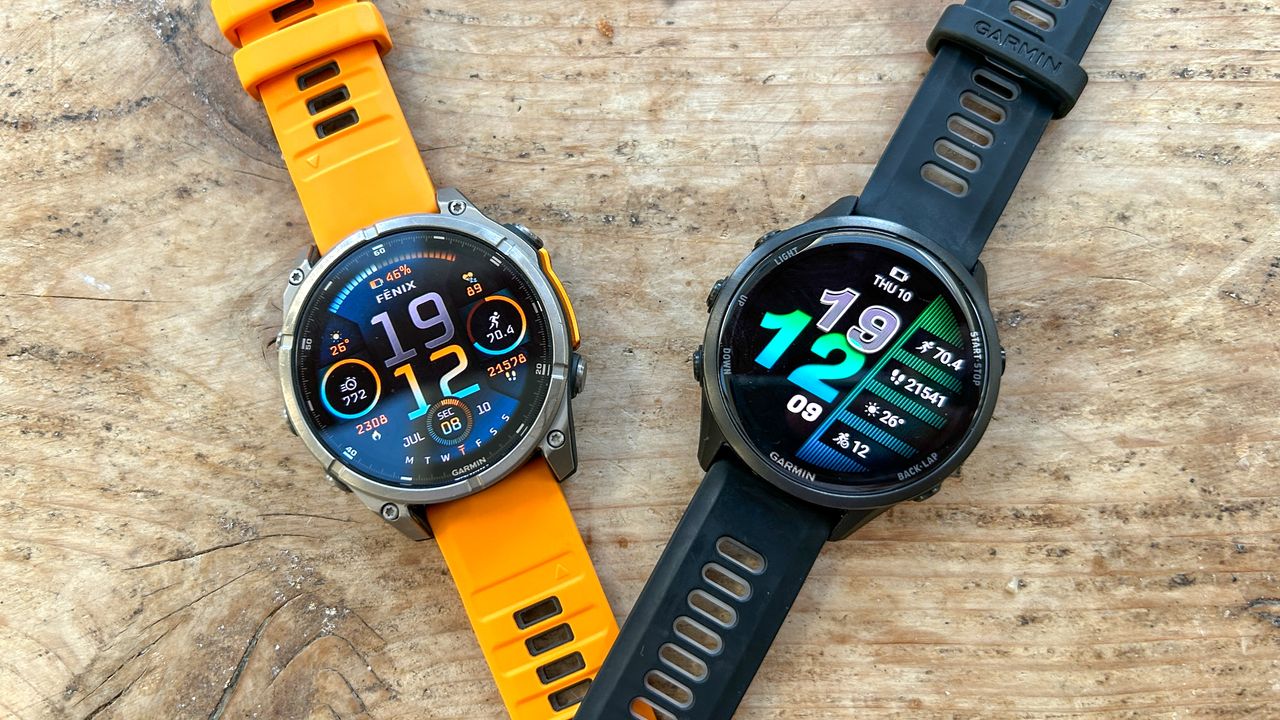
The Garmin Fenix 8 and Garmin Forerunner 970 are, in my opinion, the two best Garmin watches available, and I love testing both of them during my marathon training.
They are laden with the same features to help you track and improve your training, and also boast best-in-class navigation tools as well as useful smart and activity tracking features.
There are some important differences between them though, notably in their design, price and battery life, that will be key to picking between them.
I’ve worn each for months at a time as my main sports watch, and compared the Fenix 8 and Forerunner 970 directly with a week wearing them at the same time. Here are the key things to consider if you’re picking between them.
Garmin Fenix 8 vs. Garmin Forerunner 970: Price
The Garmin Forerunner 970 is the newer watch, having launched in May 2025, and it costs $749.99 / £629.99. There is only one model of the watch with a 47mm case that comes in three colors — black, white and grey/gold.
In contrast, there are a lot of watches in the Garmin Fenix 8 range. There are three sizes — 43mm, 47mm and 51mm — and two screen options — AMOLED and memory-in-pixel, with the latter having solar panels around the watch face.
The Fenix 8 launched in August 2024 and is the more expensive watch. It costs from $999.99 to $1199.99, depending on which model and size of the watch you opt for.
For the purposes of this article, I’m mostly going to focus on the Fenix 8 AMOLED 47mm watch, which is the most directly comparable to the Garmin Forerunner 970.
If you want a solar watch or a larger or smaller device, then the Fenix 8 range has you covered, whereas you don’t get those options with the Forerunner 970.
Garmin Fenix 8 vs. Garmin Forerunner 970: specs compared
Garmin Forerunner 970 |
Garmin Fenix 8 (47mm AMOLED) |
|
Price |
$749 |
$999 (steel); $1099 (titanium) |
Case size |
47 x 47 x 12.9mm |
47 x 47 x 13.8mm |
Screen size |
1.4 inches |
1.4 inches |
Resolution |
454 x 454 pixels |
454 x 454 pixels |
Screen material |
Sapphire crystal |
Glass or sapphire crystal |
Weight |
56g |
80g (steel); 73g (titanium) |
GPS battery life |
26 hours |
37 hours |
Smartwatch battery life |
15 days |
16 days |
Touchscreen |
Yes |
Yes |
Speaker/Mic |
Yes |
Yes |
Built-in flashlight |
Yes |
Yes |
Waterproof rating |
5ATM |
10ATM (40m dive) |
Garmin Fenix 8 vs. Garmin Forerunner 970: Design
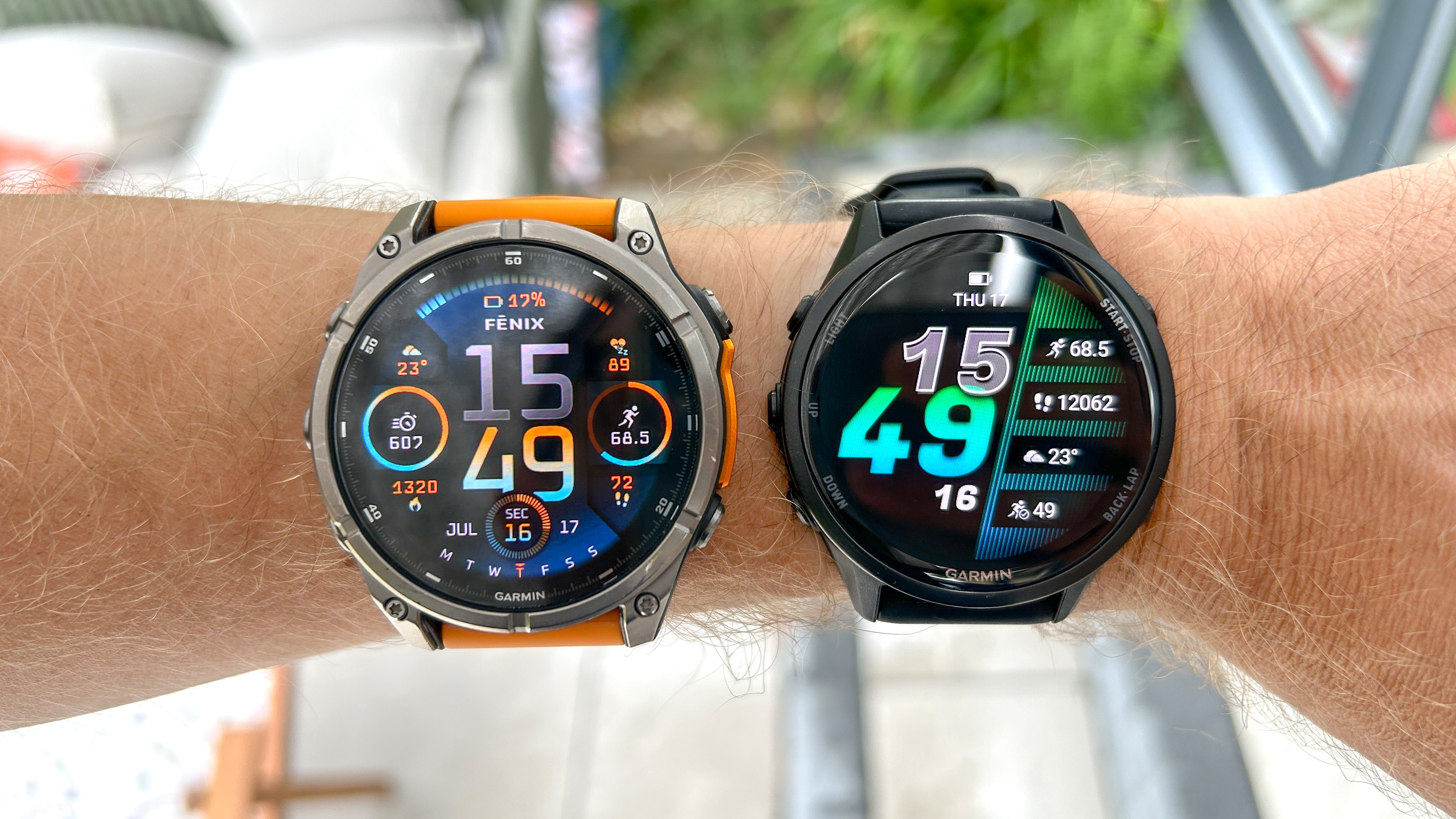
There are some shared elements in the designs of the Fenix 8 and Forerunner 970, which are both round watches with 1.4in AMOLED displays, built-in flashlights and five buttons.
The screen on the Forerunner 970 is a little brighter than the one on the Fenix 8, however, and the design is considerably slimmer and lighter than the Fenix 8, which I found made it more comfortable to wear 24/7.
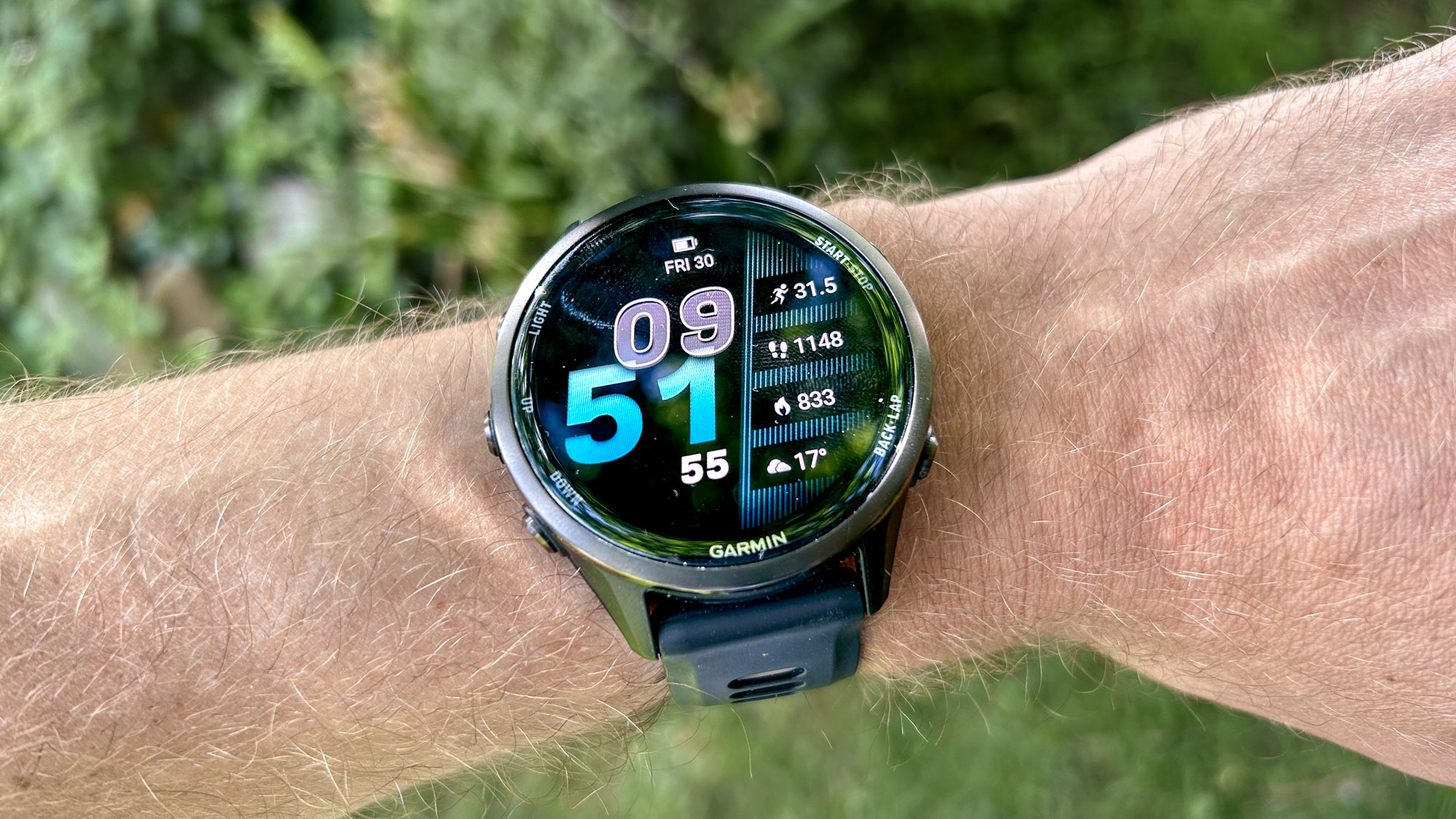
There are advantages to the bulkier Fenix design though. It’s more durable, with a larger metal bezel and metal back — the Forerunner 970 has a titanium bezel but the case is otherwise plastic — and the Fenix 8 is more waterproof, with a 10ATM rating to the 5ATM for the Forerunner 970.
The Fenix 8 is also diveproof to depths of 40m, and has leakproof buttons that feel a little different to the ones on the Forerunner 970, which are more clicky.
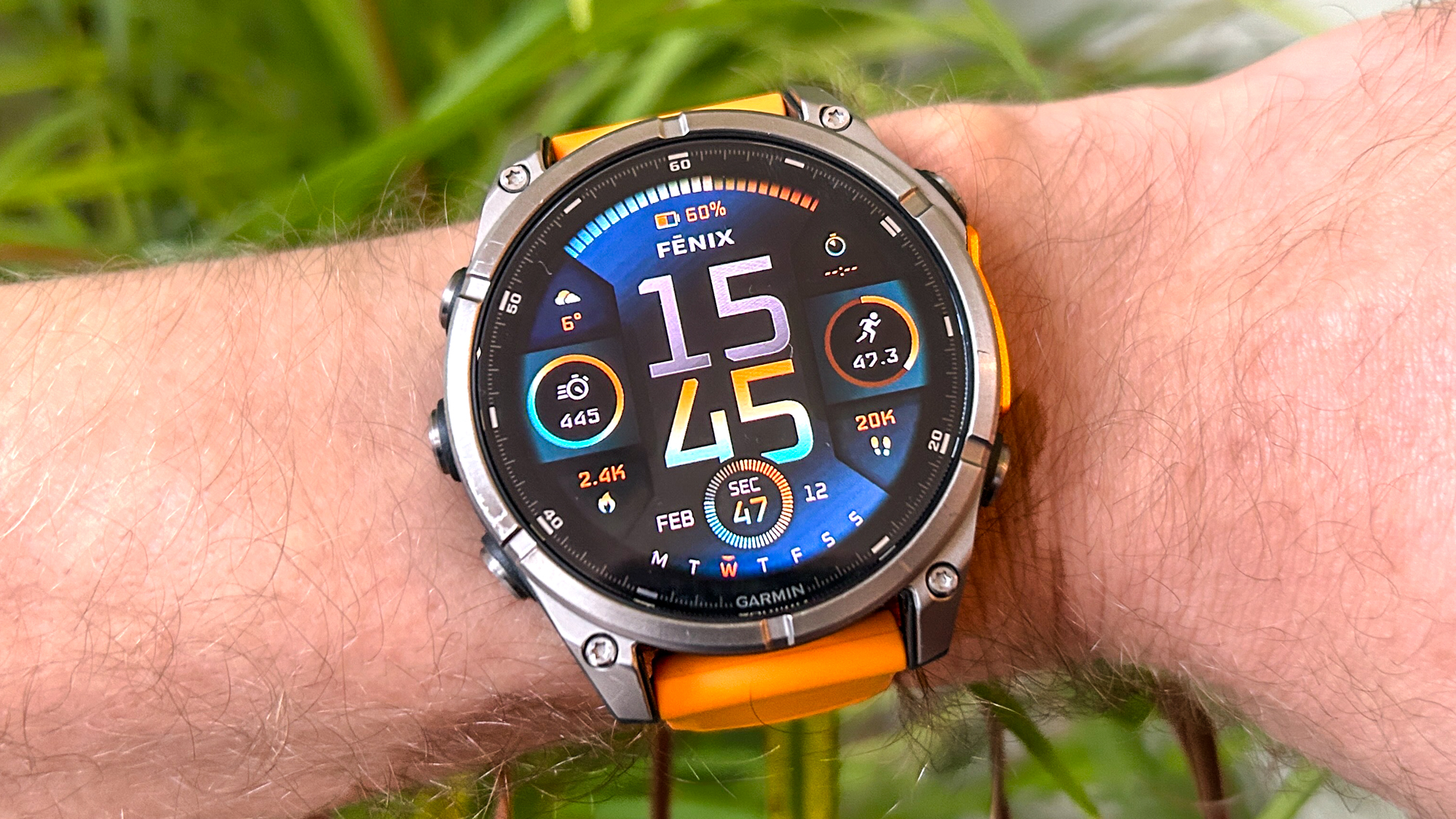
With the Forerunner 970 a scratch resistant sapphire crystal display comes as standard, but you have to opt for a more expensive model of the Fenix 8 to get this. The base model has a steel bezel with a glass display, with the sapphire model having a titanium bezel and sapphire crystal display.
Both watches have a mic and speaker, Garmin’s latest Elevate v5 optical heart rate sensor, which I found accurate in my testing, and offer multi-band GPS tracking.
There are pros and cons to each watch when it comes to design. The Fenix 8 is better-looking in my opinion, and more durable, but the sleeker design of the Forerunner 970 makes it more comfortable and it fits better on slim wrists.
Garmin Fenix 8 vs. Garmin Forerunner 970: Sports tracking
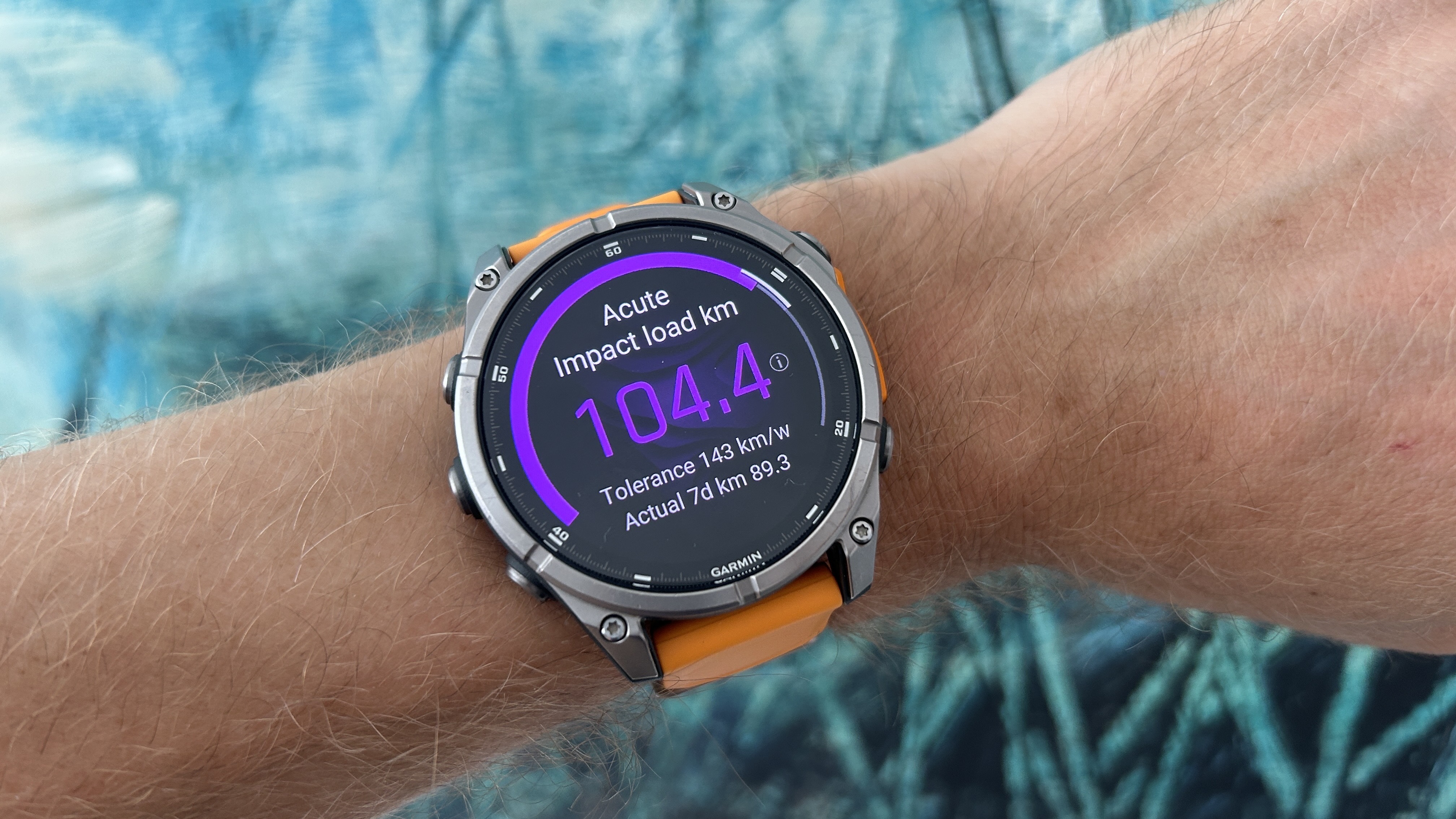
There are minimal differences in the sports tracking and training analysis on the two watches, and both will be kept up to date with new features in software updates for the foreseeable future, as they are the latest models in their respective ranges.
One difference is the scuba diving (single gas) and apnea diving modes available on the Fenix 8, and it also has a depth app. If you’re a diver, it’s clearly the one to go for.
I’ve hundreds of miles with both watches and both have proved reliably accurate for heart rate and GPS tracking throughout my testing. They are both as good as sports watches get for tracking and analysis, and there’s nothing to split them on this front.
Garmin Fenix 8 vs. Garmin Forerunner 970: Battery life
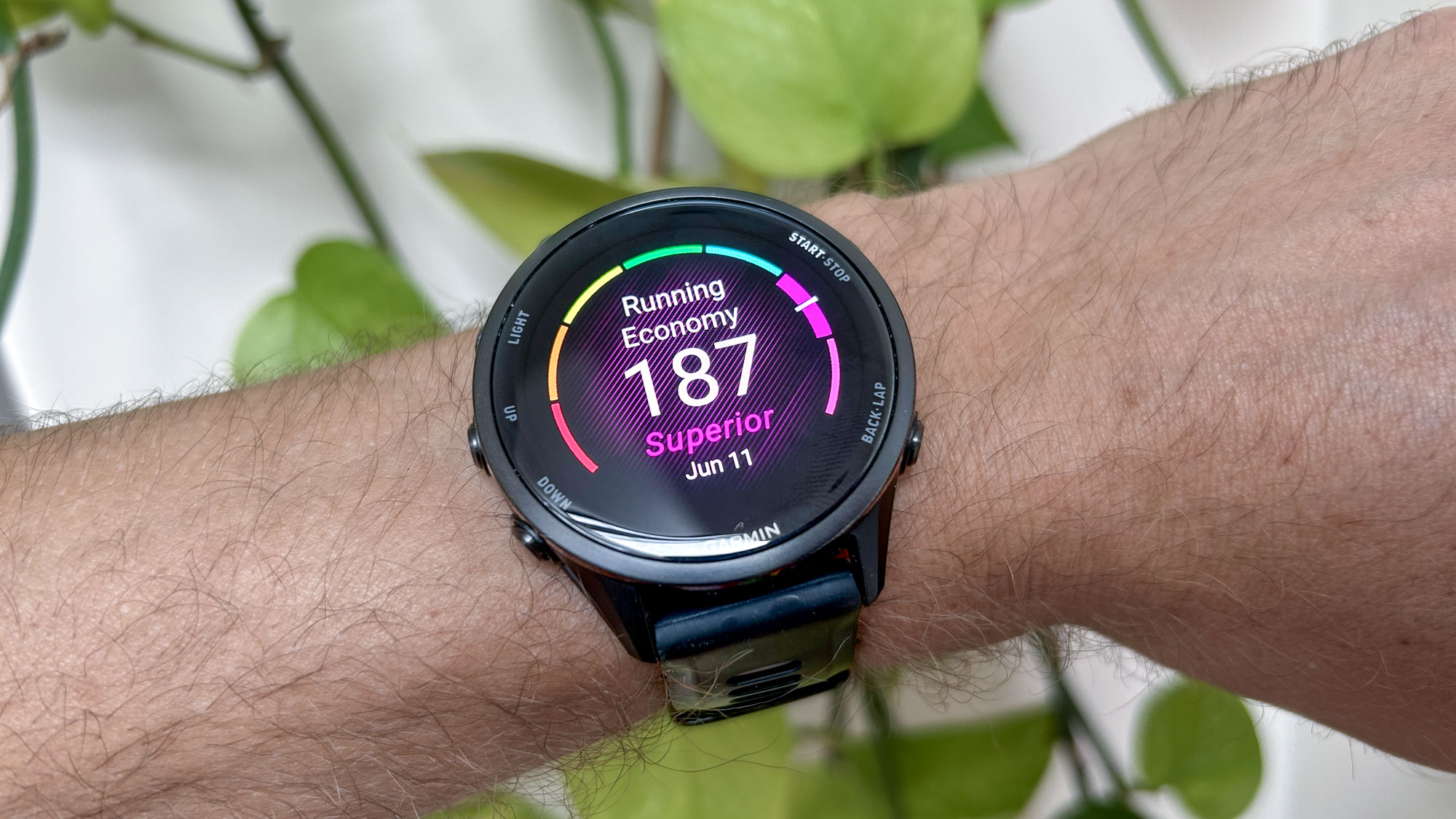
The Fenix 8 offers better battery life than the Forerunner 970, especially if you opt for one of the larger 51mm or solar-charging models of the watch, but also when comparing the 47mm Fenix 8 AMOLED to the Forerunner 970.
For most of my use I had the display set to always-on with both watches, and I used them to track daily runs and other workouts. The Forerunner 970 lasts me four or five days on a charge, and the Fenix 8 lasts me six or seven days.
If you set the screen to raise to wake then both will last longer and the gap between them grows larger. Both are pretty long-lasting for AMOLED watches, but the Fenix 8 wins this battle.
Garmin Fenix 8 vs. Garmin Forerunner 970: Verdict
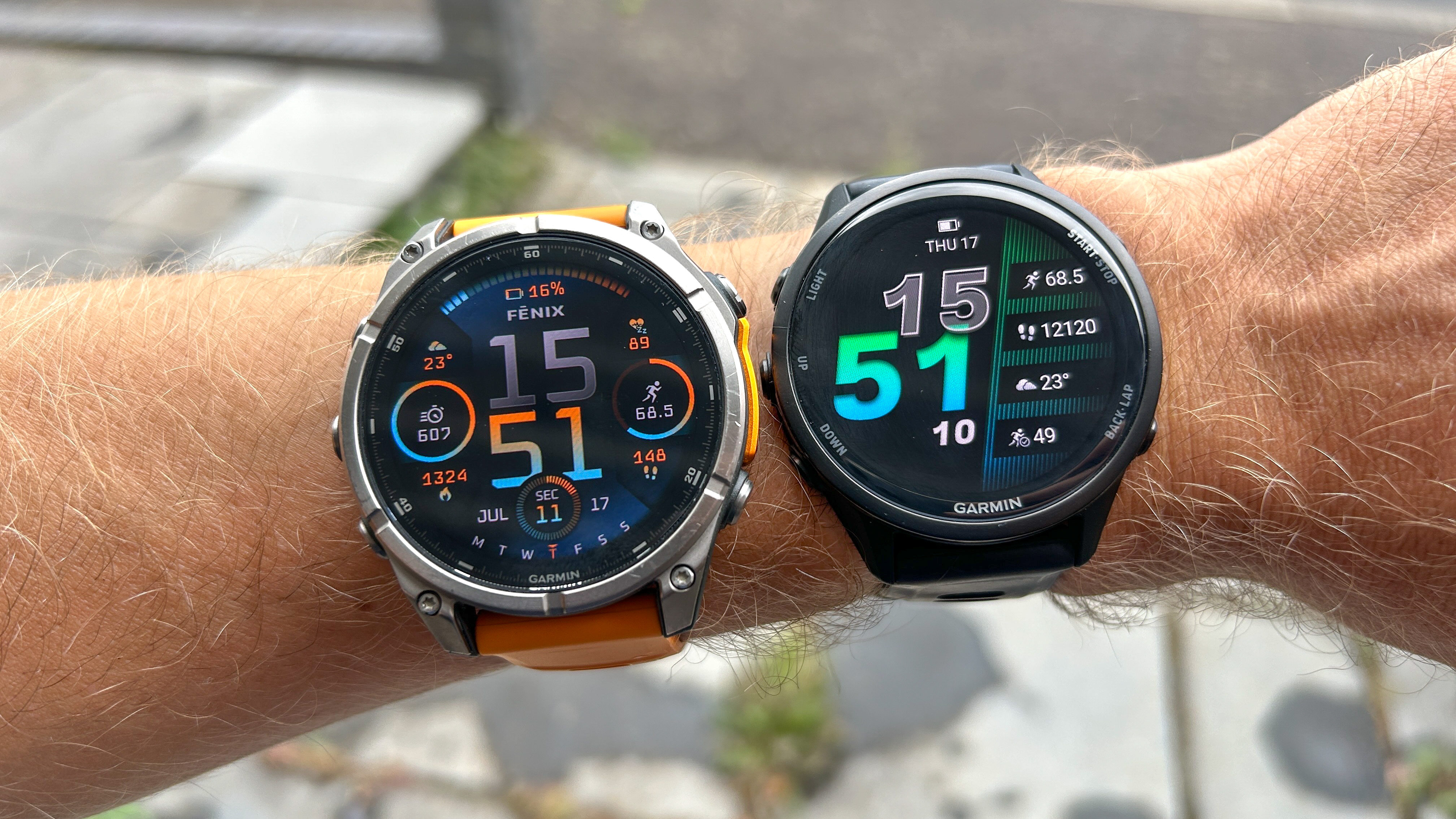
For me, the lighter, slimmer design and lower price of the Garmin Forerunner 970 makes it the better option, and it’s the one I’d get, especially as I don’t need the extra battery life you get on the Fenix.
However, there are some distinct advantages to the Fenix 8 such as that battery life, and the design is more premium and rugged, which might be enough to sway you to pay the extra if you don’t mind wearing a larger watch.







